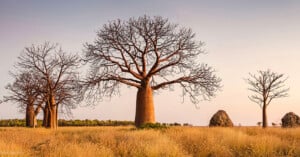
‘Talking to Trees’: Photographing the Expressive Nature of Trees
I have a confession to make. I possess a profound and abiding love and respect for trees.

I have a confession to make. I possess a profound and abiding love and respect for trees.
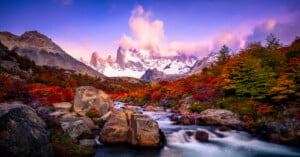
OM SYSTEM Ambassador and travel photographer Frank Smith has been capturing the diverse beauty of the world for decades. Whether it be through his photographs of people, cultures, or nature, Smith is a passionate and accomplished storyteller. However, documenting the fall colors in Patagonia had been one story that had eluded Smith for years.
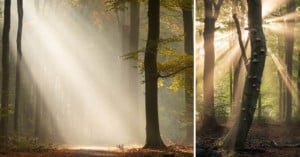
The Speulderforest (“Het Speulderbos” in Dutch) is a beautiful and serene forest, and one of the best ways to capture its natural beauty is through photography. It’s one of the more popular forests when it comes to woodland photography in The Netherlands.
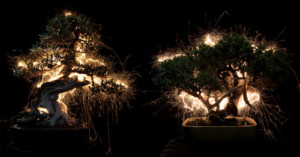
Photographer Vitor Schietti has created a new series of what he calls "impermanent sculptures" with miniature trees, or bonsai, as the subject with the goal of creating a visible "soul" of the plants.
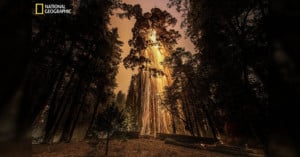
National Geographic's May 2022 issue is focused entirely on trees, critically endangered forests, their importance to the planet, and the need to preserve them.
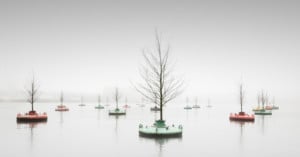
Back when I started photographing nearly a decade ago, my main subject was nature and landscapes. Over the years I continued to broaden my motifs to cityscapes, architecture, abstracts, and street photography. I still love to do them all, but there is one theme that has continued to evolve with me over the years, and that is trees.
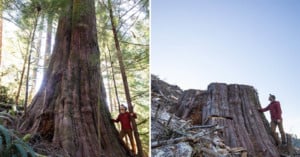
Canadian conservation photographer TJ Watt has been using his camera to protect endangered old-growth trees from logging. His powerful before-and-after photos aim to show the devastation of ancient forests that is left in the wake of clearcut logging.
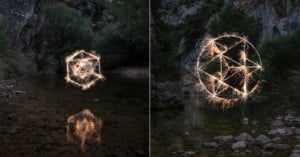
As a photographer, when you produce a series of photos that goes viral and you close sales and license deals because of it, it is tempting to simply continue doing the same and hopefully keep receiving the attention you had in the first place.
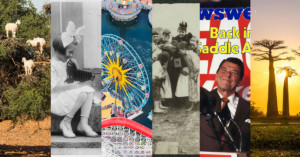
Every Sunday, we bring together a collection of easy-reading articles from analytical to how-to to photo-features in no particular order that did not make our regular daily coverage. Enjoy!
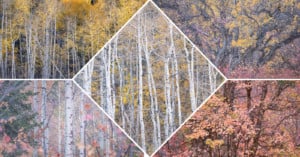
Photographing trees and forests sounds simple, but making a good image of a forest can be surprisingly challenging. In this pair of videos, Michael Shainblum explains how he wrangles the chaotic nature of trees into a beautiful photograph.
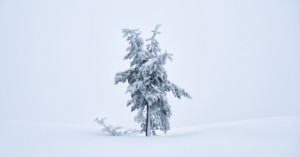
As someone who’s born and raised amongst the tree-covered hills in the east of Norway, it’s no secret that I’ve grown to miss these scenes after moving to the mountainous landscapes north of the Arctic Circle.
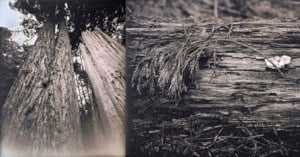
This trip has been waiting in the wings ever since I made my first successful daguerreotype in the redwoods two years ago. I actually planned on going as early as August this year, but one project after another kept getting in the way, and for months I kept pushing it back by a couple of weeks.
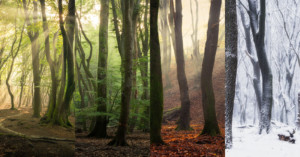
Throughout my years as a photographer, I’ve photographed the Dutch forests a lot. I love walking around in the forest on an early morning, clearing my mind, and photographing the first light peeking through the trees. Or shooting during foggy mornings, when the forest turns into a real-life fairytale.
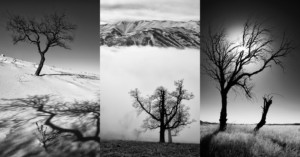
Ali Shokri is an Iranian landscape and nature photographer who has become known for his black-and-white photos of trees. The Passion of Trees is a collection of photos he has captured over the years in Iran and Azerbaijan.
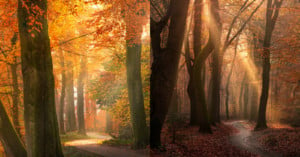
This autumn has been exceptionally beautiful in the Netherlands. Because of the interesting climate earlier this year with the extreme droughts we experienced, the trees are extremely colorful during the autumn period of this year. Trees that normally wouldn’t even turn yellow or reddish are now beautifully gold.
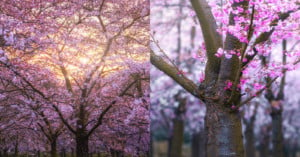
I've been seeing lots of cherry blossom photos from many friends who are visiting Japan or Korea for their beautiful and famous cherry blossoms. I’m sitting here at home in the Netherlands for a change and figured I’d show how I don’t need to travel halfway across the globe to get these shots.
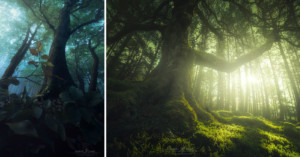
Trees invoke a sense of timelessness, of grandeur. Most species grow many centuries older than humans ever will, so let’s make trees look the part with these tips on capturing them with a wide-angle lens.
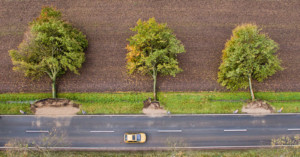
Earlier this month, a storm named Xavier pounded Europe and caused extensive damage. A day after the storm, photographer Julian Stratenschulte took his camera drone out and captured this beautiful and slightly disorienting photo showing a row of trees that were knocked down, from a bird's-eye view.
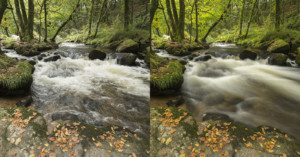
The landscape and wildlife photography website Nature TTL has partnered up with B&H to launch a new YouTube channel dedicated to nature photography. This 11-minute first episode is a look at how to shoot trees, mushrooms, and rivers in woodlands with photographer and Nikon Ambassador Ross Hoddinott.
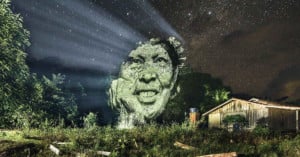
For his latest project, titled "The Blood Forest," French photographer Philippe Echaroux shot a series of photos showing portraits of indigenous Brazilians projected onto the trees of the Amazon rainforest.
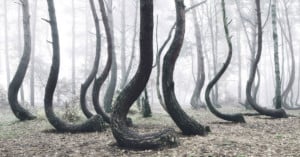
German photographer Kilian Schönberger recently shot a series of photos showing one of the most unusual forests in the world. Located near the city of Gryfino in West Poland, the so-called "Crooked Forest" has a grove of pine trees that are curved at the base.
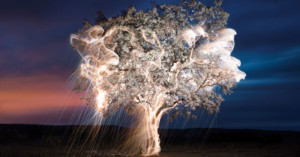
"Impermanent Sculptures" is a series of light-painting photos by Brazilian photographer Vitor Schietti. One of the interesting ideas found in the series is using fireworks to illuminate trees, resulting in photos that look like the leaves and branches are showering drops of light onto the ground.
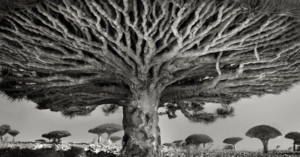
"Portraits of Time" is a series of photographs showing the oldest and most majestic trees on the face of the Earth. Photographer Beth Moon traveled to the far corners of the world over a period of 14 years in the process of shooting the shots, traveling to remote regions where the trees have largely remained undisturbed by mankind.
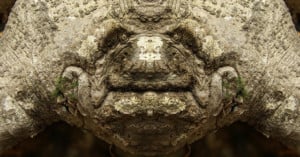
Italian photographer Elido Turco spent four years between 2004 and 2008 exploring a mirrored photography world that remains invisible to most of us. By taking photographs of tree bark and then mirroring the photographs he captured, he discovered a whole society of "Dream Creatures" were watching him each time he would take a stroll through the mountain paths.
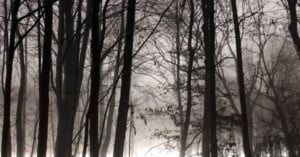
Jürgen Heckel is a photographer and sound artist who's currently living in Munich, Germany after living in Paris, France for 14 years. He spends a great amount of time in the great outdoors, and many of his photo projects are studies of trees and forests.
One of his series is titled "Lumen," and contains nighttime long-exposure photos captured amidst trees, with the horizon line illuminated by a line of light -- the light of passing cars.
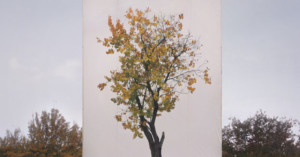
For his project titled "Tree," South Korean photographer Myoung Ho Lee found solitary trees out in nature and then erected giant white canvas backdrops behind them. He then created photos showing the trees surrounded by artificial boxes in their natural surroundings.
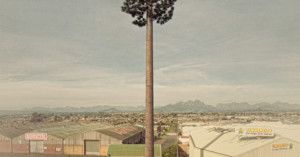
In 1996, a palm tree was introduced to a suburb in Cape Town Africa. The tree appeared almost overnight, and it wasn't an ordinary tree: it was one of the world's first (if not the first) disguised cell phone towers. Rather than have unnatural and unattractive metal towers jutting out of the ground, companies began working to make the towers blend in with the natural environment. This fake tree concept soon spread across Cape Town, across South Africa, and finally across the world.
In response to the spread of these fake trees, photographer Dillon Marsh decided to shoot a series of photos to document the trend. The series is titled, "Invasive Species."
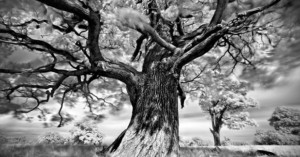
London-based photographer Martin Stavars has a beautiful series of photographs titled, "Portraits of Trees." For each of the photographs, he set his infrared camera up in front of a large tree and opened up the shutter for anywhere between four to ten minutes.
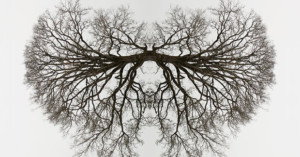
For her project Mirrors, photographer Traci Griffin explores the concept of symmetry by photographing trees in various locations, and then mirroring the sweeping branches while omitting most of the trunks.
The resulting photographs look like strange shapes, formations, and even creatures floating in midair.
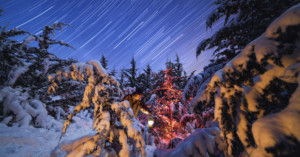
If I get a photography idea, I tend to just go with it and see if it works. I had driven out to my parent's place early in the day and the idea just came to me. I think at first I thought, "Man, I wish I had thought to shoot moon-lit snow the day before when you could make a snow man for the op."